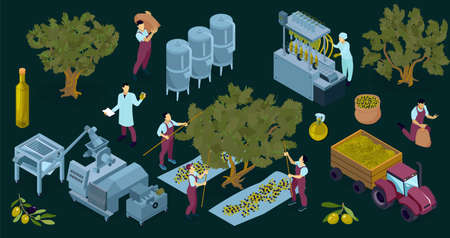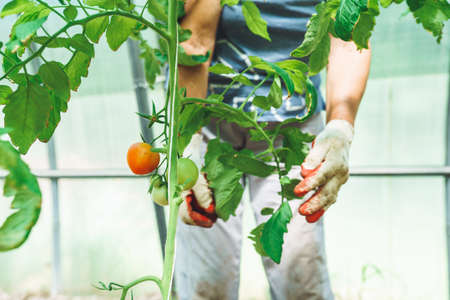Introduction to Modern Greenhouse Gardening in the UK
Greenhouse gardening has long been a cherished tradition across the United Kingdom, allowing growers to extend the short British growing season and cultivate a variety of crops despite unpredictable weather. Over recent decades, this practice has evolved significantly, moving beyond simple glass structures to become a hub for innovation and sustainability. Today’s British greenhouses are increasingly defined by their integration of smart automation and cutting-edge technology, reflecting broader national commitments to environmental responsibility and resource efficiency. As awareness of climate change grows, so too does the emphasis on sustainable growing techniques and energy-saving solutions within the horticultural sector. This transformation is not only about increasing productivity but also about reducing environmental impact through efficient water usage, renewable energy systems, and precise climate control. The present landscape of greenhouse gardening in the UK stands as a testament to both traditional expertise and forward-thinking innovation, setting a benchmark for sustainable food production and modern technological adoption.
2. Smart Automation: Transforming British Greenhouses
The integration of smart automation into British greenhouse gardening is fundamentally reshaping the industry, driving both operational efficiency and sustainability. Automated systems such as climate control, irrigation, and lighting are becoming increasingly prevalent across the UK’s horticultural landscape. These technologies not only streamline routine tasks but also enable growers to achieve greater consistency in crop quality and yield.
Automated Climate Control Systems
Modern British greenhouses utilise advanced climate control solutions that automatically monitor and adjust temperature, humidity, and ventilation levels. These systems are equipped with real-time sensors and programmable logic controllers, allowing for precise environmental management regardless of external weather conditions. By maintaining optimal microclimates, these systems help maximise plant health and productivity year-round.
Intelligent Irrigation Solutions
Water management is a critical concern in sustainable gardening. Automated irrigation systems now commonly feature soil moisture sensors and weather forecasting integration, which ensure that plants receive the exact amount of water required—minimising waste while promoting robust growth. The following table illustrates key features of smart irrigation compared to traditional methods:
| Feature | Traditional Irrigation | Smart Automation |
|---|---|---|
| Water Usage | Fixed schedule; often excessive | Sensor-driven; optimised volume |
| Labour Requirement | Manual operation needed | Remote monitoring & automation |
| Adaptability to Weather | No adjustment for rainfall or humidity | Real-time weather data integration |
| Yield Impact | Inconsistent watering can affect crops | Consistent hydration enhances yield |
Advanced Lighting Automation
The use of automated LED lighting has become standard practice in many British greenhouses, particularly where natural sunlight is insufficient during winter months. These lighting systems can be programmed to simulate optimal daylight cycles, supporting photosynthesis and extending growing seasons. Such adaptability ensures that production targets can be met irrespective of the UK’s variable climate.
Benefits for British Growers
The adoption of these smart automation technologies offers multiple advantages: reduced resource consumption, lower labour costs, improved crop uniformity, and increased resilience to climatic fluctuations. As the horticultural sector continues to embrace innovation, the role of automation in future-proofing British greenhouse gardening will only become more pronounced.

3. Key Technologies in Use
Modern British greenhouse gardening has witnessed a remarkable transformation through the integration of smart automation and cutting-edge technology. These advancements are specifically tailored to address the nuances of the UK’s unique climate and traditional horticultural practices, making them both practical and highly effective.
Sensors: Precision Monitoring for Optimal Growth
One of the most significant technological advancements is the widespread adoption of environmental sensors. These devices continuously monitor crucial variables such as temperature, humidity, soil moisture, and light levels within greenhouses. By collecting real-time data, sensors enable gardeners to respond proactively to sudden weather changes or microclimatic fluctuations typical of British gardens, ensuring that plants receive optimal care throughout the year.
Mobile Applications: Seamless Control at Your Fingertips
The proliferation of mobile applications dedicated to greenhouse management has revolutionised the gardener’s approach. These apps, often compatible with both iOS and Android devices, allow users to remotely control heating, ventilation, irrigation, and lighting systems from anywhere in the UK. With intuitive interfaces designed for British users, these applications facilitate timely interventions—such as adjusting ventilation during an unexpected heatwave or activating frost protection on chilly spring nights—thereby safeguarding delicate crops and maximising yields.
Data Analytics: Harnessing Insights for Sustainable Gardening
The integration of data analytics into greenhouse technology represents another leap forward. By aggregating and analysing historical environmental data, these systems provide actionable insights tailored to local British conditions. For instance, predictive analytics can inform gardeners when to initiate watering schedules based on rainfall patterns in their region or optimise energy use by correlating historical sunlight hours with supplementary lighting needs. Such data-driven decision-making not only improves efficiency but also aligns with sustainable gardening principles increasingly valued in the UK.
Adaptation to British Gardening Practices
These technologies are not merely generic solutions; they are adapted to reflect longstanding British gardening traditions and preferences. From supporting heritage tomato varieties that thrive in specific microclimates to integrating with rainwater harvesting systems popular in eco-conscious communities, smart automation tools are designed with local relevance in mind. As a result, they empower both seasoned horticulturists and hobbyist growers across Britain to achieve reliable results while embracing innovation.
4. Benefits for British Growers
Adopting smart automation and modern technology in greenhouse gardening offers a range of advantages tailored to the unique challenges and opportunities faced by UK gardeners. These benefits extend from resource management to operational efficiency, supporting both small-scale enthusiasts and commercial horticulturists.
Resource Optimisation
One of the principal gains for British growers is the efficient use of key resources such as water, energy, and nutrients. Smart irrigation systems, for example, use sensors to deliver precise amounts of water, reducing waste—a crucial consideration given increasing pressures on water supplies across the UK. Automated climate controls further ensure that heating and lighting are used only when needed, helping to lower utility costs and reduce carbon footprints.
| Resource | Traditional Approach | Smart Technology Approach |
|---|---|---|
| Water | Manual watering, risk of overuse or under-watering | Sensor-driven, optimised delivery |
| Energy | Constant heating/lighting schedules | Automated adjustment based on real-time conditions |
| Nutrients | Periodic manual application | Precision dosing via automated feeders |
Labour Savings and Operational Efficiency
The integration of automation technologies substantially reduces manual labour requirements. Tasks such as climate monitoring, pest detection, and even crop harvesting can now be streamlined or fully automated. This is particularly valuable given the rising cost and scarcity of skilled labour in the UK’s agricultural sector. By reallocating time from routine tasks to strategic activities—such as crop planning or market research—growers can focus on scaling their businesses or enhancing produce quality.
Support for Year-Round Cultivation
The unpredictable British weather has long limited growing seasons. However, with modern greenhouses equipped with automated temperature and humidity controls, growers can maintain optimal conditions throughout the year. This capability not only ensures consistent crop yields but also allows for diversification into high-value crops that would otherwise be unviable outside traditional growing periods. The result is greater food security and reduced dependence on imports during off-seasons.
Summary Table: Key Benefits for UK Growers
| Benefit Area | Description | UK-Specific Impact |
|---|---|---|
| Resource Efficiency | Reduces consumption and lowers costs | Counters resource scarcity and addresses sustainability goals set by DEFRA* |
| Labour Reduction | Minimises repetitive tasks through automation | Tackles workforce shortages in agriculture |
| Year-Round Production | Keeps greenhouses productive regardless of season or weather fluctuations | Improves food self-sufficiency for British communities |
*Department for Environment, Food & Rural Affairs (DEFRA)
5. Challenges and Considerations
The integration of smart automation and modern technology into British greenhouse gardening presents a variety of challenges that merit careful consideration. While the benefits are compelling, several obstacles can hinder seamless adoption across different scales of horticulture.
Upfront Investment and Financial Planning
One of the most prominent barriers is the substantial initial investment required for advanced systems such as automated irrigation, climate controls, or integrated sensor networks. For many small-scale growers and hobbyists in the UK, the upfront costs can be prohibitive, often outweighing the perceived long-term savings. Financial planning, including exploring grants or government incentives tailored to sustainable agriculture, is essential to make these technologies accessible.
Technological Literacy and Training
The successful operation of smart greenhouse systems demands a certain level of technological literacy. Many traditional British gardeners may find the transition daunting, particularly if they have limited experience with digital interfaces or remote monitoring platforms. To bridge this gap, targeted training programmes and accessible support materials must be made available, ensuring that growers at all levels feel confident in managing new technology.
Compatibility with Traditional Horticultural Practices
British horticulture boasts a rich heritage grounded in time-tested methods and local plant varieties. There can be resistance to adopting automation tools that are perceived as incompatible with established practices or that could disrupt delicate ecological balances. Careful selection of technology that complements rather than replaces traditional skills is crucial; hybrid approaches that respect local knowledge can ease acceptance among seasoned growers.
Connectivity and Infrastructure
Reliable internet connectivity is another practical concern, especially in rural areas where many greenhouses are located. Limited broadband access can compromise the effectiveness of cloud-based monitoring or control systems, underscoring the need for robust infrastructure improvements in tandem with technological rollouts.
Regulatory and Environmental Implications
The evolving regulatory landscape around data privacy, energy use, and environmental impact also plays a role in shaping how automation is implemented within British greenhouses. Growers must remain informed about compliance requirements while balancing sustainability goals with technological advancement.
Addressing these multifaceted challenges will require ongoing collaboration between technology providers, horticultural experts, policy makers, and end users to ensure that innovation in British greenhouse gardening remains both inclusive and effective.
6. The Future of Greenhouse Gardening in the UK
The landscape of greenhouse gardening in the United Kingdom is on the cusp of significant transformation, driven by smart automation and cutting-edge technology. As we look towards the future, several emerging trends are set to reshape how British gardeners approach sustainability, productivity, and community engagement within their greenhouses.
Emerging Technological Trends
British greenhouse gardening is rapidly integrating advanced technologies such as artificial intelligence (AI), machine learning, and IoT-connected devices. These innovations enable real-time monitoring of plant health, precise control over microclimates, and automated irrigation systems tailored to specific crop needs. Additionally, data-driven decision-making allows gardeners to optimise resource use and minimise waste, aligning with broader environmental objectives. Robotics for planting, harvesting, and maintenance are also becoming more accessible, making sophisticated cultivation techniques available to both commercial operations and hobbyists.
Policy Considerations
The UK government’s commitment to net zero emissions by 2050 and its ongoing support for sustainable agriculture have created a favourable policy environment for adopting smart automation in horticulture. Incentives for renewable energy integration, funding for research into climate-resilient crops, and updated guidelines on water management all encourage British gardeners to adopt modern technology. However, policymakers must continue to ensure that regulations keep pace with technological innovation while safeguarding biodiversity and promoting equitable access to these advancements across different regions and socioeconomic groups.
The Rise of a Technologically Adept Community
A growing community of tech-savvy British gardeners is shaping the future of greenhouse gardening culture. Online forums, local societies, and collaborative initiatives foster knowledge-sharing and collective problem-solving. Workshops on digital tools for gardening are increasingly popular, while social media platforms enable enthusiasts to showcase their automated greenhouse setups and exchange tips on new gadgets or software updates. This supportive network not only accelerates technological adoption but also ensures that best practices are adapted to the unique conditions found across the UK’s diverse climates.
Challenges and Opportunities Ahead
While the benefits of smart automation are clear—improved yields, reduced environmental impact, and greater convenience—there remain challenges such as initial investment costs and technical know-how barriers for some growers. Addressing these concerns through accessible training programmes, government-backed incentives, and affordable entry-level solutions will be crucial in ensuring widespread adoption. Furthermore, partnerships between technology providers, research institutions, and grassroots gardening groups can help tailor innovations to meet local needs.
Conclusion: A Sustainable Vision
The future of greenhouse gardening in the UK promises a harmonious blend of tradition and innovation. As smart automation becomes an integral part of everyday practice, British gardeners are poised to lead the way in sustainable food production, resource conservation, and community resilience. By embracing these advancements thoughtfully and inclusively, the next generation of greenhouse growers will cultivate not only thriving plants but also a flourishing culture rooted in both heritage and progress.


